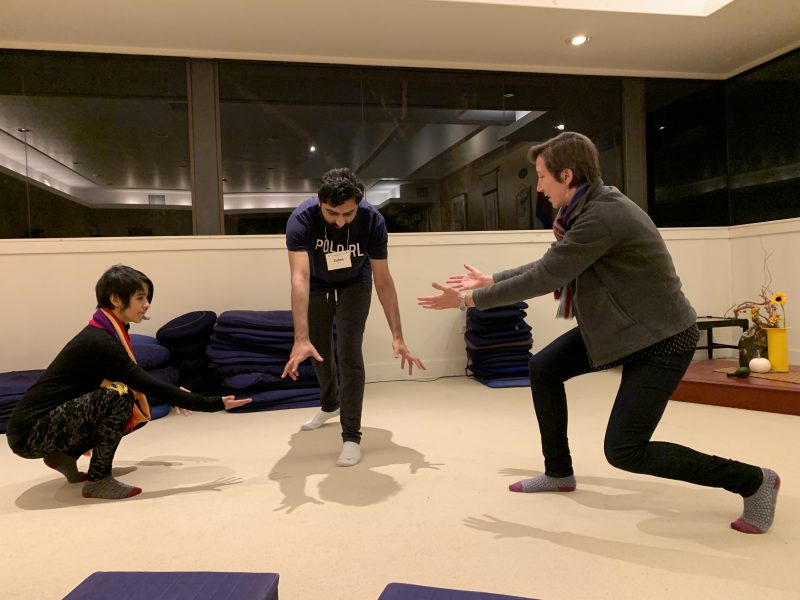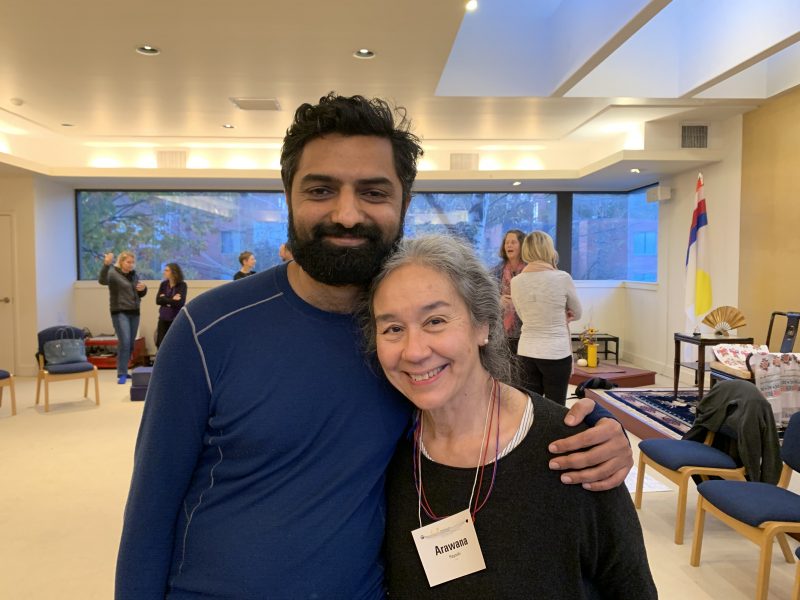Learning in Stillness and Movement
Posted on November 12, 2019First time I did Social Presencing Theatre (SPT), I fell in love.
I still don’t understand how it happened. As part of a two-hour workshop, I was in a duet with someone I’d just met. We were asked to exchange gestures one after the other while allowing for ma between our gestures. Originally a Chinese concept, ma evolved in Japanese to hold multiple meanings — an interval, pause, room or opening. Ma concurrently considers the elements of time and space. After five minutes of this exchange, I noticed this deep sense of unbridled connection. My partner reciprocated similar feelings which surprised and confused me even further and also piqued my curiosity.

SPT Group Practice
A year later, I leaped at the opportunity to attend a two-day basics workshop with SPT master Arawana Hayashi. The basic premise of SPT is to allow space for the intelligence of the physical bodies to emerge. Giving rest to our mental chatter, we let our bodies and deeper intuition to guide us in movement across space-time. Alternating between stillness and movement, particular emphasis is placed on holding the stillness long enough to ensure that our behavior is not a habitual response but rather reaching for a deeper source from where the next movement emerges. “Stillness,” Arawana tells us, “gives birth to the next gesture.”
While holding still on the floor at one moment in the workshop, I felt an embodied understanding of Donna Haraway’s explanation of the Greek root kainos. Haraway describes kainos as “now, a time of beginnings, a time for ongoing, for freshness…in the sense of thick, ongoing presence…infusing all sorts of temporalities and materialities.”
The first practice of SPT begins with connecting with the physical body and then transitions to begin noticing the social body. We explore our understanding of the social body through The Village, one of the oldest practices in SPT. In Village, we are given a few norms for our movement and asked to hold 25% of our attention on our back-bodies and 75% on the social body. We are then given freedom to speechlessly move about engaging with the collective, noticing what patterns emerges. Rather than focusing on the visual, we privilege the transmodal dimension, noticing the shifting intensities, intimacies, rhythms and collective forms, all of which have the particular quality of not being attached to a particular sense but can fluidly transition from one sensory dimension to another.

Arawana Hayashi and Zishan Jiwani
While being present to the collective form, I notice a tension in my body – one part seeking acceptance from the group and another wanting authentic expression. Digging deeper into this tension, I notice an emergent fear of rejection and isolation. Deviating from the norm in the Village is an act of vulnerability. If no one follows me, what does that mean? Do they not like me? Before they reject me, should I just reject them? An expanded reflection helps me see this behavior pattern playing out in many of my group engagements – something I now have the opportunity to notice and change.
The two-day experience was deeply profound in its depth while also being refreshingly light. Like a small feather dancing in the wind, it emerged, held me momentarily and passed away leaving me with a wondrous awe and deep gratitude.
-ZJ
Sources Cited
Haraway, D. J. (2016). Staying with the trouble: Making kin in the Chthulucene. Durham: Duke University Press.
Hayashi, A. (July 17 2019). Four Reflection Processes on the Village. Retrieved from https://medium.com/@arawanahayashi/four-reflection-processes-on-the-village-bfd2602a433d.
Petitmengin, C. (2007). Towards the Source of Thoughts. Journal of Consciousness Studies, 14(3), 54–82. Retrieved from http://clairepetitmengin.fr/AArticles versions finales/JCS – Source.pdf
Pilgrim, R. (n.d.). Ma: A Cultural Paradigm. Chanoyu Quarterly, 46.